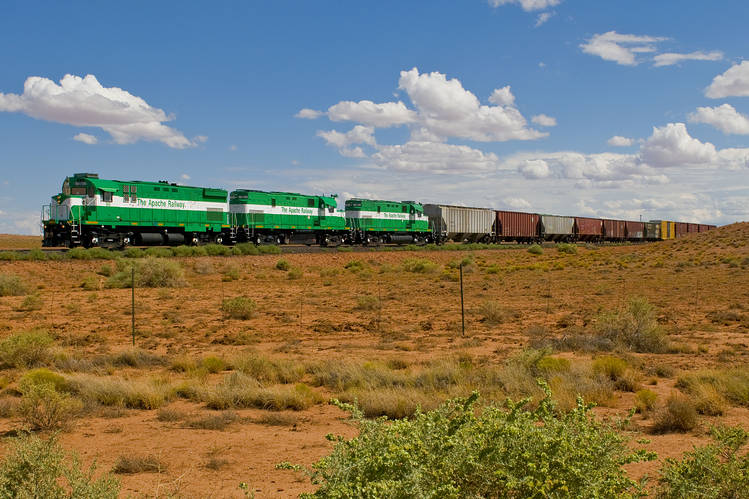by: J. Pierce
115,000 railroad workers were all set to strike or honor the picket lines of their fellow workers on Friday, Sept 16, 2022. That was the end of the 30 day “cooling off period” that Biden’s Presidential Emergency Board (PEB) instituted as an intervention in railroad negotiations.
Union members are currently reviewing the Tentative Agreements (TAs), formed around the PEB’s recommendations: a pathetic 24% “raise” in pay over five years (in other words less than 5% per year – a wage decrease compared to 9% inflation); $5,000 – $11,000 in buyoffs and hush money; one measly additional paid day off per year (one more per month sounds more appropriate); and, of course, an increase in health insurance premiums.
In a Summer 2022 statement by Jeremy Ferguson and Dennis Pierce, the presidents of SMART-TD and BLET respectively, they called the carriers’ extortionist moves “corporate terrorism”. They said the Class 1 carriers were holding rail shippers, retailers, and the entire American economy hostage, as they squeeze their employees for more. The companies are pressuring Congress to step in and prevent the workers from striking. Calling attention to this irony, the union statement goes on:
“These self-appointed titans of industry complain constantly about government regulation and interference — except now when it comes to breaking the backs of their employees. It’s time for the federal government to tell the CEO’s who are running the nation’s railroads into the ground that enough is enough.”
“What does all this mean for railroaders in the Copper State?”
Workers at the Class 1 carriers that service Arizona, such as BMWED Local 508, BRS Local 172, and BLET Locals 28, 123, and 647 to name a few, are directly involved in negotiations and looking over the proposed contract language.
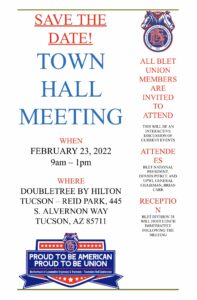
The major rail carriers involved in negotiations include Union Pacific, Warren Buffett’s BNSF, Norfolk Southern, and CSX. Union Pacific train crews run the company’s freight through southern Arizona on the former Southern Pacific “Sunset Route”, linking Texas and California. From Tucson’s sprawling terminal in the middle of town, UP workers head up to their rail hubs in Phoenix and Casa Grande, over to the Yuma yard, down through Nogales, and across the border into Sonora where their brothers and sisters on the Ferromex take over.
Linking California and Chicago, BNSF workers lead their trains across northern Arizona, on the “Transcon”, through their Winslow rail yard and onto Flagstaff, as well as down through Wickenburg to Phoenix. All of these UP workers in Southern AZ and BNSF workers in Northern AZ will either be voting the TAs up or down, or they will be affected by the new contracts in one way or another.
It is worthwhile to note that one of the major unions involved in the national negotiations is the International Association of Sheet Metal, Air, Rail and Transportation Workers, Transportation Division (SMART-TD). Their southwest locals refused to cross picket lines during the Steelworkers and Teamsters-led ASARCO mine strike from 2019 -2020. The other major player in the negotiations is the Brotherhood of Locomotive Engineers and Trainmen (BLET), which according to FOX10, “said that more than 99% of its members voted to authorize the union to go on strike if a deal can’t be reached.” Both SMART-TD and BLET have the strength and solidarity to take militant action when the time comes. This might be necessary in the weeks and months ahead.
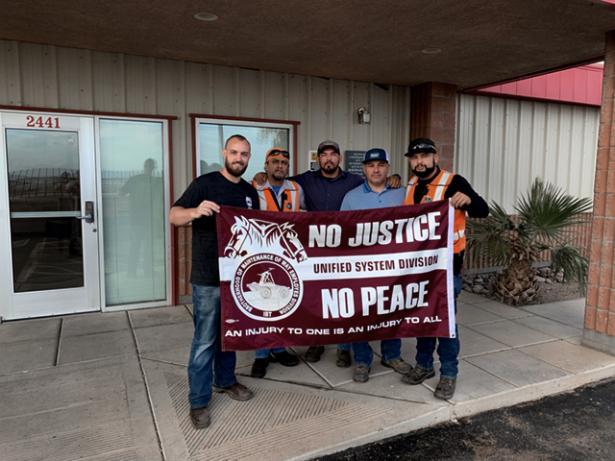
BMWED track workers in Yuma, circa 2019 – (Carey Dall on Portside)
Jesus Garcia, an active member of Tucson’s Lodge 0508 of the Brotherhood of Maintenance of Way Employes Division (BMWED-IBT) of the Teamsters union, told me that their union is “talking at length” about what their tentative agreement entails for the maintenance workers and tipped me off to the notice their union issued back on Tuesday Sept 13: BMWED put out an advisory to all of its members stating that their union members are required to respect and not cross any picket lines by striking workers. The advisory also stated that members would be paid strike benefits for respecting picket lines of other crafts and they would also get paid in the case of a lock out of their jobs by the national carriers. The notice stated that BMWED members could honor picket lines but could not (or can’t) participate in the strike itself (in other words, they can’t chase down and beat up managers attempting to keep the trains running, or trash the cars of Wall Street executives trying to rush the picket lines to get through.)
What about workers on Arizona’s dozen or so “short lines“? Many of Arizona’s short line railroads are either directly owned by mining companies, such as ASARCO and Freeport-McMoRan, or service the mines exclusively. Many questions remain at large: How are mine workers affected by all the changes in the railroad industry? How will the national negotiations affect short line workers in Arizona? This is all just about Freight; What about all of Arizona’s passenger rail lines – from Amtrak to the scenic lines to the metro light rails – how are workers on these passenger railroads affected?
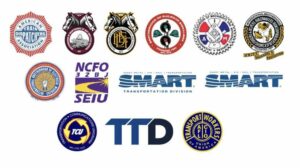
“What happened with the big strike?”
A big, united national railway strike has been averted, for now. All twelve unions involved in negotiations have signed TAs with the boss’ association. Union members are reading what’s in the agreement. But not all is said and done. Some unions might vote it down, which would throw a wrench into the plans of a lot of players. That might mean that the fight is back on. But… the bosses might want a strike, if they think they have the upper hand.
Fritz Elder, a special representative of Railroad Workers United says: “It’s as likely the industry will lock out as a strike. In a sense the carriers have begun that already by cancelling trains across the country. The hedge funds that now run Class 1s are militantly betting they can force a historically bad change in working conditions. They have confidence their Democratic Party allies in Congress will back them.”
“This dispute isn’t about wages anymore.” says Fritz. “In fact, no amount of wage increase would actually address the risk concerns for the public and rail workers. The carriers have broken the supply chain with their PSR policies that drove tens of thousands of skilled workers from the industry. Now they don’t have enough workers to run the trains and they want to solve that by shifting risk and cost to the employees and the public.”
“PSR stands for Precision Scheduled Railroading,” Fritz explains, “but it was none of those things. It was a hedge-fund-driven managerial scam to lower the Operating Ratio. In order to do it, they had to sell off assets, close facilities, stop marginal operations, and lay off tens of thousands of workers, among other things. They wanted to run fewer but superlong, heavy trains.”
Meanwhile, as the unions are looking over the TAs, Railroad Workers United is promoting rank-and-file ‘ad hoc’ actions, such as the informational picketing that took place on Wednesday Sept. 21 at various terminals across the country.
The RWU statement said that these pickets are “an expression of working rail workers who are angry and unhappy with the treatment that railroad workers have endured in recent years.”
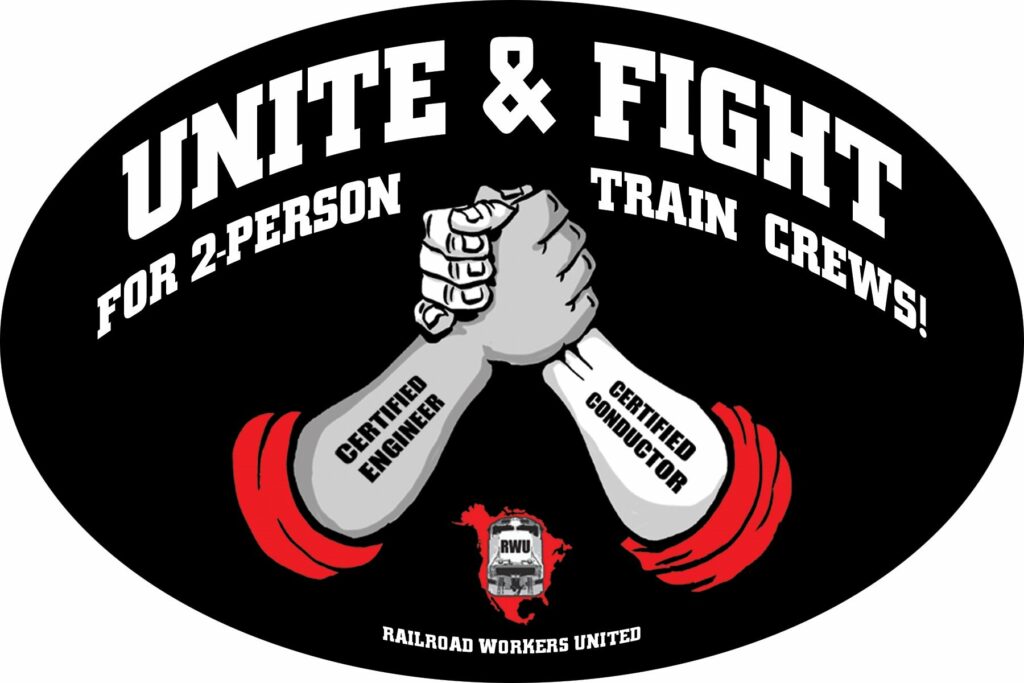
“What conditions need to be fixed?”
It seems that the carriers and government regulators are attempting to do to rail workers what has been done in other industries, such as auto a few decades back or perhaps Amazon right now: make the dispute all about pennies here and pennies there, a fight over pay, while keeping the real questions of control and quality-of-life off the table.
Summarizing from an August Associated Press article, both FOX10 and Arizona Daily Star‘s “Tucson” website reported: “The major freight railroads have eliminated nearly one-third of their jobs over the past six years as they overhauled their operations to run fewer, longer trains that need fewer locomotives and employees”. The key phrase is “need fewer” locomotives and employees. They don’t need fewer employees. The rail carriers are simply forcing workers into highly dangerous situations, and then blaming the employees when a tragic accident occurs.
Railroad Workers United has been fighting hard to keep multiple employee train crews where they still exist and regain multiple employee crews where the carriers have whittled it down to one worker.
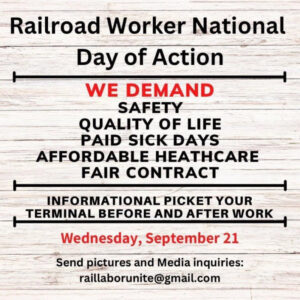
Here are the major issues that railroad workers want addressed:
1.) Onerous, ‘on-call’ scheduling and punishment
2.) Understaffed crews
3.) Overwork and constant stress
4.) Lack of down time, free time, and days off
5.) Unsafe working conditions
6.) Inadequate and expensive healthcare
7.) Excessively long, heavy, and dangerous trains prone to adversity
These are the pressing issues that railroad workers are most concerned with, especially over the long term. They must be fixed. Any resolution to the current conflict by means of these weak TAs won’t address the fundamental problems that have converted a great career into a miserable job. Besides that, even some decent pay increases can simply be gobbled up by inflation – recouped by the bosses as we have all seen recently at the pump, at the grocery store, and in rent increases. Wage gains are always illusory. Workers, not just in rail, but everywhere, need to fight for less work and more free time.
“What could be done now by working railroaders?”
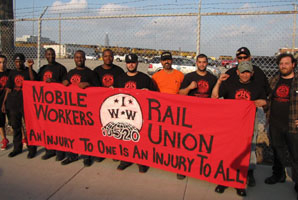
Here are some IWW-style ideas you might discuss with your co-workers:
1.) A “VOTE NO” campaign: Most people will tell you that this idea is a non-starter with so much top-down pressure from Biden and the Democrats. The politicians are trying hard to keep the economy from going “off the rails”, as it were, ahead of their elections. Still, a VOTE NO campaign might generate some needed pressure from below. Union workers have, in the past, successfully voted down a first contract offer and signed a superior one the second time, so it might be worth a shot.
2.) Informational pickets and public presence: This is already happening and the IWW whole-heartedly supports all types of picketing, protesting, marching, demonstrating… you name it. Anytime workers organize themselves and can make their grievances public and their numbers felt by the bosses it’s a good thing. Solidarity is a muscle you have to exercise often. And, of course, the more that these picketing efforts can interfere with profit-generating activities, the better.
3.) A prolonged ‘Self-help’ action campaign: The Brotherhood of Railroad Signalmen’s website was telling their members very specifically not to engage in “self-help actions”. But this is precisely what workers under the IWW banner have always done to get results: a sustained and coordinated campaign of small and large everyday actions by workers to win better staffing, better schedules, and safer conditions.
This is not going to be easy, however, says Gifford Hartman, a long-time labor educator and instructor with the Global Labour University whose specialties are General Strikes and Logistics. “Railroaders, with no strike experience in over a generation, need to find ways to build up collective activity. They need to be prepared to successfully strike,” says Gifford. He recommends that rail workers draw on the historical tradition of the West Coast longshoremen.
The International Longshore and Warehouse Union (ILWU), was built on, Gifford says, “the 4-day San Francisco General Strike in 1934, after which they initiated 1,399 strikes, both legal and illegal, over the ensuing 18 years. Through this tradition of real direct action, they protected their gains and almost entirely controlled the work process on the shopfloor for another dozen years. Their reign as ‘Lords of the Docks’ ended with containerization in the 1960s.” Indeed, as IWW members are quick to point out, it was the thousands of everyday refusals by West Coast longshoremen, many of them IWW members, that built up the workers’ strength and confidence. Direct action works, but it takes time and you’ve got to take a risk if you want changes.
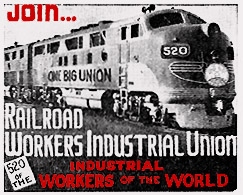
Most railroad workers are expected to honor picket lines. This is crucial in any direct action “self-help” campaign to establish new standards. If the campaign is one where rank-and-file members are taking the initiative, you can expect the union office cats to denounce any action outside the contract as “illegal”. Therefore, as you prepare for your self-help battles, you will have to build up the solidarity of working railroaders from your craft and workers from other crafts in your vicinity.
The task at hand is developing a ‘culture of resistance’. Similar to the ‘post’-COVID vogue phrase ‘quiet quitting’, it means that you and your co-workers need to become stubborn in refusing all the bullshit that the bosses think is ‘par for the course’. A culture of resistance:
“That’s unsafe, we can’t do that.” “We need a full crew for this route. We are not accepting one-person crews for this route. No one is going out by themselves.” “This job is going to need a full crew. We can’t do it with an inadequate crew.” “I’m not scheduled for that shift. I am not available.” “I can’t do it. You need to find someone else.” “That’s dangerous, we don’t do that.” “This isn’t the correct gear. We need the correct gear.” “This is broken. It doesn’t work. It needs to be fixed.” “We don’t work with that.” “We won’t do that.” “No.”
This is easier said than done, of course. But the carriers are in desperate need of workers who can make their operations run on time. So it might be possible to time your actions right and hit them in a time crunch when they can’t afford to say No. Direct action works best when the bosses are going to lose a lot of money in a short amount of time if they refuse your demands.
In order to prepare, here are a bunch of suggestions in random order: Set up group text-chats. Establish cross-craft meet-ups. Practice what each of you are going to say and do. Prepare for the bosses’ retaliation and disciplinary actions. Think through what the bosses will say and do and have your response ready. If the bosses hire new workers, you can infiltrate that process and gum up the works or you can make sure your cousin, the militant unionist, gets hired on. Be-friend the new workers around you. If you are already union, be-friend the non-union contract workers and glue yourselves to them. This is very important, since companies in all industries love to introduce sub-contracted workers as though they are from outer space or don’t even exist. The bosses love to exploit any racial divides, especially if the union workers are mostly white and the non-union contractors are mostly workers of color. The BMWE Rank and File United website specifically highlights the need to oppose racism and sexism and this could be crucial if the non-union contract employees are majority workers of color or include women. Bring them into the union fold, exchange info, set up a group chat with them, and help them unionize their crew or company. If you work for a not-yet-unionized company, find a friendly union worker, build trust between your respective crews, and bring them into your plans to unionize. Build up your co-workers into a confident, cross-craft, fighting force. Changes will come quick when the bosses have lost control over the compliance of the workforce and “solidarity” is on everyone’s lips.
Fellow worker, if you need some inspiration to get organized, take this quote from BLET president Dennis Pierce as your watchword: “People need to be allowed to enjoy the fruits of their labor instead of just having to be at work every day. So I think the key issue is this, and there’s no way we can back away from it.”
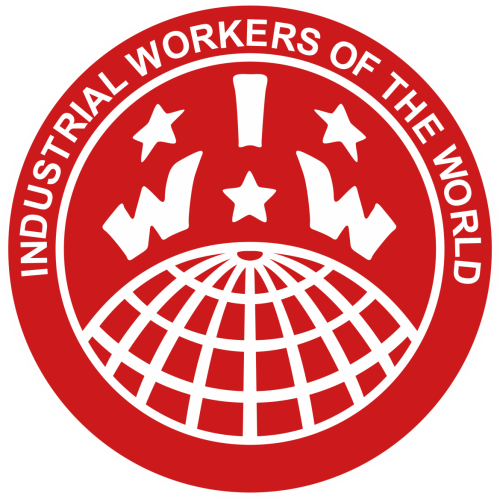
Arizona’s Short Line Railroads
Below is a list of Arizona’s short line railroads. Some of them are no longer operational. If you do (or did) work for, on, or around any of these railroads, or have information about them related to unions, the IWW in Arizona would love to hear from you (pierce@sonhuelgaz.org). You are also highly encouraged to contact Railroad Workers United.
Apache Railway (APA) – Holbrook to Snowflake; Arizona and California Railroad (ARZC) – Matthie to Cadiz CA; Arizona Central Railroad (AZCR); Arizona Eastern Railway (AZER) (1) Bowie to Miami; and (2) Lordsburg to Clifton; Arizona Public Service at Cholla Power Plant; Black Mesa and Lake Powell Railroad (BMLP); Camp Navajo Railroad; Clarkdale Arizona Central Railroad Drake to Clarkdale; Copper Basin Railway (CBRY) (ASARCO) – Magma to Ray, to Hayden Smelter, and to Winkelman; Drake Switching Company at Drake cement plant; Freeport McMoRan Railroad at Morenci Mine; JBC Rail Services at Kingman; Kingman Terminal Railroad (KGTR) at Kingman Airport & Industrial Park; Port of Tucson Railroad (POT); Rose Acre Farms Tanya Cecil Grain and Railroad Terminal (“Lone Cactus Railroad”) at Lone Cactus Egg Farm of Rose Acre Farms near Utting; San Manuel Arizona Railroad (SMA) (Capstone Mining) – Hayden to Pinto Valley Mine; San Pedro Valley Railroad (SPVR) – Benson to Curtiss; and Willcox.

